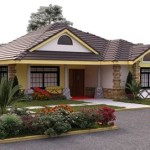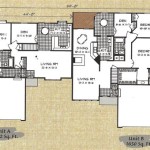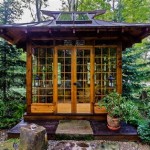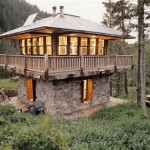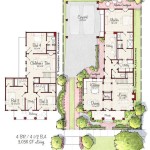Japanese House Floor Plans: An Exploration of Space and Functionality
Japanese house floor plans are renowned for their emphasis on simplicity, functionality, and harmony with nature. Rooted in centuries of tradition and adapted to modern living, these designs prioritize efficient use of space, natural light, and a connection to the outdoors. Understanding the key elements of Japanese residential architecture can provide valuable insights for anyone considering designing or renovating a home, regardless of location.
Traditional Japanese houses often feature open floor plans, minimizing the number of fixed walls and maximizing flexibility. This approach allows for spaces to be easily reconfigured to suit different needs, whether it’s a large gathering or a private retreat. The use of sliding doors, known as shoji or fusuma, further enhances this flexibility, enabling homeowners to create distinct zones within a larger space without permanently dividing it. These screens, often made of lightweight wood frames and translucent paper, also diffuse natural light, creating a soft and inviting atmosphere.
The concept of "Ma" (間) is central to Japanese design. "Ma" refers to the intentional use of empty space, not as a void, but as an integral element that defines the relationship between objects and activities. This principle encourages a sense of spaciousness and tranquility, preventing clutter and promoting a feeling of calm. Furniture is typically minimal and multi-functional, further contributing to the uncluttered aesthetic. Low tables (kotatsu) and floor cushions (zabuton) are common, encouraging a closer connection to the ground and fostering a sense of intimacy.
Optimizing Space with Tatami Mats
Tatami mats are a defining feature of traditional Japanese homes. These woven straw mats serve as both floor covering and a modular unit of measurement. Their standard size (approximately 90cm x 180cm) dictates the dimensions of rooms, ensuring a harmonious proportion throughout the house. Room sizes are often described in terms of the number of tatami mats they contain (e.g., a 6-tatami mat room). This modularity simplifies the planning process and ensures a consistent aesthetic.
Beyond their practical function, tatami mats offer several advantages. They provide a comfortable and resilient surface for walking, sitting, and even sleeping. Their porous nature helps regulate humidity, absorbing moisture during humid weather and releasing it during drier periods. The subtle scent of the straw also contributes to a relaxing and natural ambiance. The placement of furniture on tatami mats requires careful consideration to avoid damage. Chairs, desks, and beds are often placed on raised platforms or use special protectors to distribute weight evenly and prevent indentations.
Modern adaptations of tatami mats include incorporating them into designated areas within a Western-style home, creating a dedicated space for meditation, tea ceremonies, or simply relaxation. These "tatami rooms" offer a taste of traditional Japanese aesthetics and provide a unique sensory experience.
The use of tatami mats extends beyond residential spaces. They are frequently found in traditional inns (ryokan), temples, and martial arts dojos, reflecting their deep cultural significance. The ritual of maintaining tatami mats, including regular cleaning and occasional replacement, is also an important aspect of Japanese domestic life.
The Importance of Natural Light and Ventilation
Japanese house design emphasizes the importance of natural light and ventilation. Large windows and strategically placed openings maximize the flow of sunlight and fresh air, creating a healthy and invigorating indoor environment. The use of shoji screens allows for diffused light to enter the space, reducing glare and creating a soft, ambient illumination. The orientation of the house is carefully considered to take advantage of natural sunlight throughout the day, minimizing the need for artificial lighting.
Traditional Japanese houses often incorporate engawa (縁側), covered verandas that run along the perimeter of the building. These spaces serve as a buffer between the interior and the exterior, providing a sheltered area for relaxation and contemplation. Engawa also facilitate cross-ventilation, allowing air to circulate freely throughout the house. The placement of gardens and courtyards adjacent to the house further enhances the connection to nature, creating a tranquil and visually appealing environment.
In modern Japanese architecture, sustainable design principles are increasingly integrated to maximize energy efficiency. Solar panels, rainwater harvesting systems, and high-performance insulation are becoming standard features in new homes. Architects are also exploring innovative ways to utilize natural light and ventilation to reduce reliance on artificial heating and cooling systems.
The integration of the outdoors into the living space is crucial. This often involves carefully planned gardens that are visible from multiple points within the house. These gardens are not simply decorative; they are carefully designed to evoke a sense of tranquility and harmony, reflecting the changing seasons and providing a connection to the natural world. The use of natural materials, such as wood, bamboo, and stone, further reinforces this connection.
Privacy and Functionality in Layout Design
Japanese house floor plans balance the need for privacy with the desire for open, flexible spaces. While open floor plans are common, careful consideration is given to creating distinct zones for different activities. Bedrooms and bathrooms are typically located in more private areas of the house, while living areas and kitchens are often more open and accessible. The use of sliding doors and screens allows for these zones to be easily separated or combined as needed.
Entryways (genkan) are a crucial element of Japanese homes. This space serves as a transition zone between the outside world and the interior, where shoes are removed before entering the living areas. A built-in shoe cabinet (getabako) is typically provided for storing footwear. This practice helps maintain cleanliness and prevents dirt and debris from being tracked into the house.
Bathrooms (furoba) in Japanese homes are designed for relaxation and cleanliness. They typically consist of a separate bathing area (washitsu) and a toilet room. The washitsu is equipped with a shower and a deep soaking tub (ofuro), where occupants can relax and soak after showering. This ritual of bathing is considered an important part of Japanese culture, promoting both physical and mental well-being.
Kitchens in Japanese homes are often compact and efficient, designed for preparing simple and healthy meals. The layout is typically focused on functionality, with ample counter space and storage. Modern Japanese kitchens often incorporate high-tech appliances and space-saving features to maximize efficiency. The placement of the kitchen is carefully considered to ensure adequate ventilation and access to natural light.
The layout often incorporates designated areas for hobbies and interests. This could be a small study for writing and reading, a room for practicing traditional arts such as calligraphy or playing musical instruments, or a dedicated space for gardening. These areas are often designed to be quiet and secluded, providing a peaceful environment for pursuing personal passions.
The concept of universal design is also increasingly incorporated into Japanese house floor plans. This involves designing spaces that are accessible to people of all ages and abilities, including those with disabilities. Features such as ramps, grab bars, and wider doorways are becoming more common in new homes, promoting independence and inclusivity.
In conclusion, Japanese house floor plans offer a unique approach to residential design, emphasizing simplicity, functionality, and harmony with nature. The use of tatami mats, natural light, and flexible spaces creates a tranquil and inviting living environment. By understanding the key principles of Japanese residential architecture, homeowners and designers can create spaces that are both aesthetically pleasing and functionally efficient.

Typical Home Layouts Differences Between Japan And Abroad

Hachidori Floor Plan Traditional Japanese House Japan Design Home Plans

Japanese Home Design Ideas Pictures 331 Sqm Homestyler

The Layout Of Ground And First Floor A Traditional Japanese House Scientific Diagram

Traditional Japanese House Floor Plan Google Search Plans

The Floor Plan Of Apartments In Japan Japanese Home Archi Designer

Japanese Home Design Ideas Pictures 331 Sqm Homestyler
In Praise Of The Japanese Imagination Houseplans Blog Com

Creating A Traditional Japanese House In Live Home 3d

Traditional Japanese Architecture Tea Ceremony Japan Experiences Maikoya



